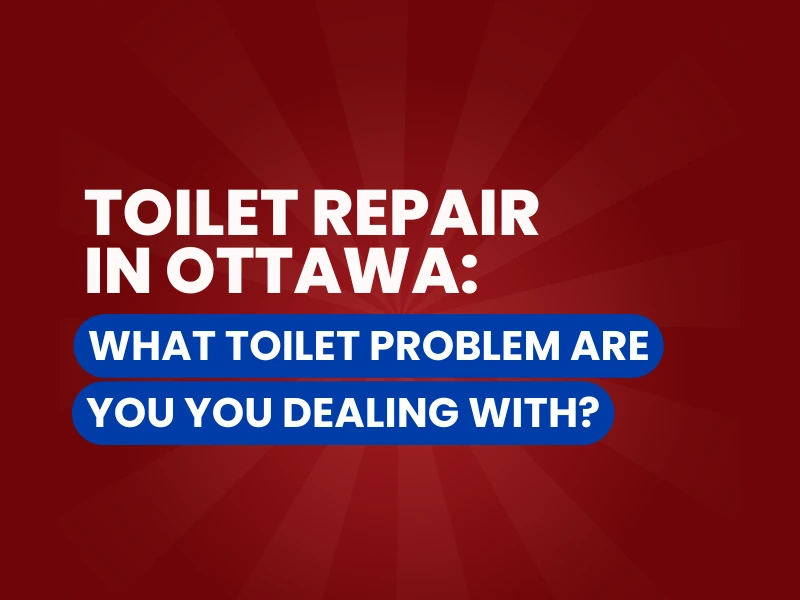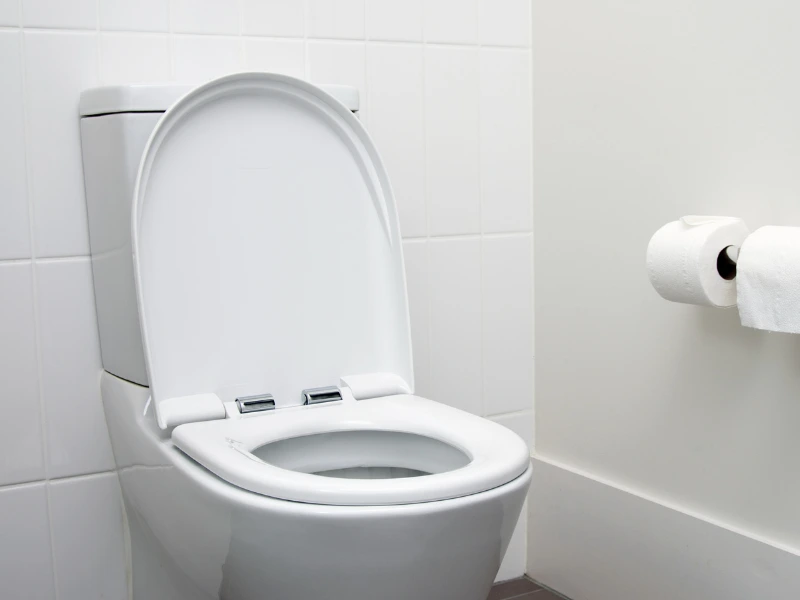
Is your toilet causing you trouble? Leaks at the base, nonstop running, or weak flushing are all signs that something is wrong. Ignoring the issue can lead to costly repairs and higher water bills.
Here’s how to spot the problem early before it gets worse:

Running Toilet
A running toilet isn’t “running” in the literal sense - but it’s definitely wasting water. This issue occurs when water keeps leaking from the tank into the bowl, even when the toilet hasn’t been flushed.
As Curtis McGrath, a veteran plumber, echoed, “A running toilet generally refers to a leak from the tank to the bowl through the mechanism itself - meaning the mechanism’s gaskets or seals have failed.”
Weak Flush
If your toilet flushes but fails to clear the bowl effectively, you’re likely dealing with a weak flush. This happens when the bowl doesn’t generate enough suction to pull down waste, even though the tank appears to be functioning normally.
This could be due to several issues: partially clogged rim jets, low water level in the tank, or even mineral buildup inside the bowl over time. Weak flushes can result in frequent double flushing, wasted water, and incomplete clearing of waste.
Leaking Between the Tank and Bowl
If you have a two-piece toilet, it’s common to see leaks between the tank and the bowl. This is typically caused by a failed rubber gasket between the tank and the bowl, or by loose or corroded bolts that hold the two sections together.
Over time, the gasket hardens and loses its seal, allowing water to drip down every time the toilet is flushed. If you notice water pooling around the base of the tank, it’s time to inspect the connection.
Leaking Toilet on the Floor
A leaking toilet on the floor is often a sign that something has gone wrong with the wax seal that connects your toilet to the flange. “Leaking toilet on the floor generally refers to a ring at the seam between the toilet bowl and the floor,” says Curtis McGrath, a professional plumber. “Usually, it’s a bad wax seal.” In some cases, it might also point to a crack in the porcelain itself.
This can lead to warped flooring, mould, and costly water damage if left unchecked.
Loose or Wobbly Toilet
A wobbly toilet is more than just annoying - it’s a sign that something is off below the surface. This problem can stem from several issues, including uneven flooring, loose toilet bolts, or damaged flanges.
Curtis McGrath, a licensed plumber at Mr. Rooter Plumbing of Ottawa, explains that this repair can vary widely in cost due to the number of potential causes. “Something as simple as loose toilet bolts may require us to lift and reset the toilet and replace the wax seal,” he says. “But a broken toilet flange may require changing out the piping, which is a much more invasive process.” Likewise, leaks from loose or wobbly toilets can cause damage to the subfloor, requiring major carpentry and flooring repairs.
Leaking Water Supply Tube or Valve
The water supply tube and shutoff valve are small but essential components that bring water to your toilet tank. Over time, these parts can wear out or begin leaking, especially if they haven’t been replaced during prior plumbing work.
This is one of the most overlooked problem areas in toilets, often by homeowners attempting DIY fixes. Curtis McGrath notes that many people never think about changing the supply line, even though it's a frequent source of slow leaks - but a cracked or poorly connected line can result in water damage behind the toilet or under the flooring.
Unblocking a Toilet Using a Plunger or Auger
If your toilet is slow to drain or fully clogged, most homeowners start with mechanical tools like a plunger or an auger. A plunger can dislodge minor surface blockages, while a toilet auger can reach deeper into the trap to pull or push clogs through.
These tools are generally effective for removing typical buildup like toilet paper, waste, or minor obstructions. However, plunging incorrectly can push the clog further, and using an auger the wrong way can scratch the bowl.
If the toilet is still slow to drain after these efforts, the issue may lie beyond the bowl.
Unblocking by Removing and Reinstalling the Toilet
Sometimes, a clog can’t be reached with a plunger or auger, especially if it’s caused by a foreign object like a toy, feminine product, or excessive buildup deep in the trap. In this case, the safest and most effective method is to remove the toilet, clear the obstruction manually, and reinstall it with a new wax seal.
Curtis McGrath shares that this approach is needed, “If you have a blocked toilet and it’s a foreign object or very stubborn object that you really do not want to push down on the drain.” Retrieving it would be the most secure way of pulling it out without affecting the rest of the plumbing system. Though it’s more labour-intensive, this method prevents further damage and ensures the drain is a hundred percent clear.
Why Accurate Diagnosis Matters
Toilets may all look the same, but the cause of a leak, clog, or malfunction can vary greatly. A weak flush isn’t always a tank issue - it could be low pressure or clogged jets. Likewise, a leak at the base might be caused by a faulty wax ring or a cracked flange. That’s why it’s essential to get the proper diagnosis before starting any repairs.

At Mr. Rooter Plumbing of Ottawa, we never guess. Our licensed plumbers inspect the entire toilet system before recommending a fix. We provide transparent pricing, warranty-backed repairs, and peace of mind that the job is done right - the first time.
Clogs, Leaks, or Wobbles? Flush Your Worries Away with Mr. Rooter Ottawa
If your toilet isn’t working the way it should, don’t wait until it turns into a bigger issue. From leaks and wobbles to clogs and constant running water, our skilled plumbers are ready to diagnose the problem, explain your options, and restore full function with reliable and professional care.
Call Mr. Rooter Plumbing of Ottawa Today
Contact us today at mrrooter.ca/ottawa/ or (613) 746-0000 to schedule your service. Don’t let a minor toilet issue turn into a costly plumbing emergency.

